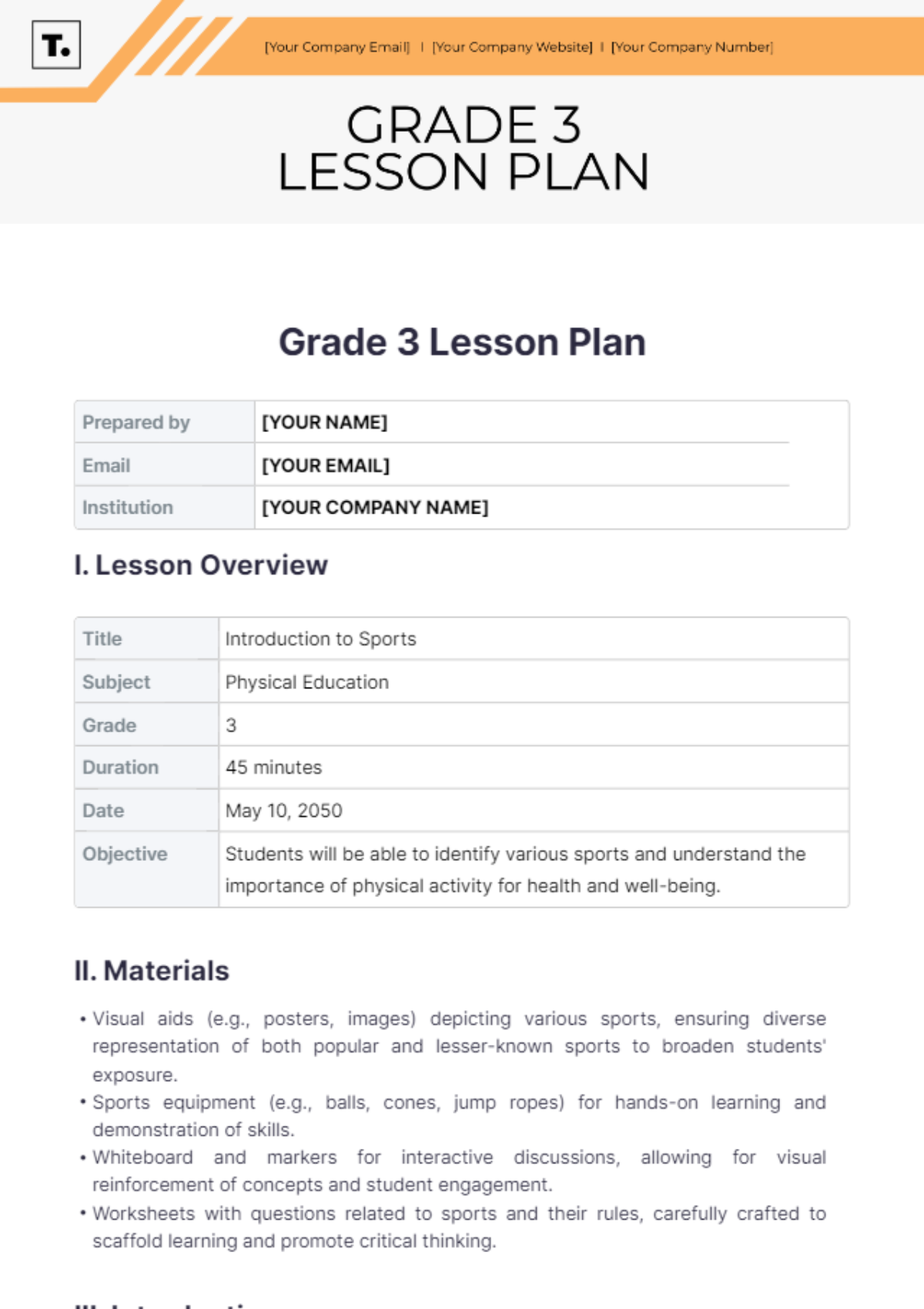4th Grade Lesson Plan
I. Lesson Overview
In this engaging art lesson, students will delve into the fascinating world of color theory. Through a series of interactive activities and creative projects, they will gain a deeper understanding of color relationships, mixing techniques, and their application in visual arts.
II. Learning Objectives
Understand the basic principles of color theory: Students will grasp the fundamentals of color theory, including primary, secondary, and tertiary colors, as well as complementary and analogous color schemes.
Identify primary, secondary, and tertiary colors: Students will be able to differentiate between primary colors (red, blue, yellow), secondary colors (orange, green, purple), and tertiary colors (mixtures of primary and secondary colors).
Experiment with color mixing techniques: Students will explore various color mixing techniques using paint and learn how to create new hues, tints, and shades.
Apply knowledge of color theory to create original artworks: Students will apply their understanding of color theory to create visually appealing artworks that demonstrate effective use of color.
III. Materials Needed
Materials | Quantity/Description |
|---|---|
Color wheel charts | Sufficient for each student/group |
Paintbrushes | 1 per student |
Paint palettes | 1 per student |
Watercolor or acrylic paints | Red, blue, yellow, orange, green, purple, white, black |
Construction paper or canvas | Several sheets per student/group |
Pencils and erasers | 1 set per student/group |
Mixing trays or containers | Several per student/group |
Reference books or online resources | Available for classroom use |
IV. Lesson Activities
A. Introduction to Color Theory (30 minutes)
Engage: Begin by discussing the significance of color in art and its impact on emotions and mood. Show examples of artworks that utilize color effectively to convey meaning or evoke specific feelings.
Define: Introduce the concept of color theory, explaining the properties of primary, secondary, and tertiary colors. Use a color wheel chart to illustrate the relationships between these colors.
Explore: Allow students to explore the color wheel individually or in small groups. Encourage them to identify and label primary, secondary, and tertiary colors, as well as complementary and analogous color schemes.
B. Color Mixing Techniques (40 minutes)
Demonstration: Conduct a demonstration on basic color mixing techniques using primary colors (red, blue, yellow). Show how to create secondary colors (orange, green, purple) by mixing primaries, and introduce the concept of tinting and shading.
Hands-on Activity: Provide students with paint palettes, brushes, and paper. Instruct them to experiment with color mixing to create different hues, tints, and shades. Encourage them to document their observations and discoveries.
Discussion: Facilitate a discussion on students' findings and observations during the color mixing activity. Ask guiding questions about the effects of mixing different colors and proportions and the importance of color harmony in artworks.
C. Creating Artworks (30 minutes)
Prompt: Assign students a creative project where they apply their understanding of color theory to create original artworks. For example, they could paint a landscape, still life, or abstract composition focusing on color relationships and balance.
Work Time: Allow students time to work on their projects, providing guidance and feedback as needed. Encourage experimentation with color combinations, contrast, and mood to express their artistic vision.
Share: Invite students to share their completed artworks with the class. Encourage them to explain their color choices, artistic decisions, and the inspiration behind their creations.
V. Assessment
Assessment is a crucial component of this lesson, allowing us to evaluate students' understanding of color theory and their ability to apply it creatively in their artworks.
Observation: Throughout the lesson, observe students' engagement, participation, and understanding during class activities and discussions. Take note of their ability to identify primary, secondary, and tertiary colors, as well as their proficiency in mixing colors to create new hues, tints, and shades.
Artwork Evaluation: Evaluate students' completed artworks based on multiple criteria, including:
Use of Color: Assess the effectiveness of color choices and combinations in conveying mood, atmosphere, and visual impact.
Creativity: Evaluate the originality and inventiveness of students' artistic expressions and compositions.
Craftsmanship: Consider the level of skill and attention to detail demonstrated in the execution of the artwork.
Composition: Evaluate the overall composition, balance, and arrangement of elements within the artwork.
Written Reflection: After completing their artworks, have students write a short reflection on their creative process, focusing on their understanding of color theory and how they applied it in their artworks. Encourage students to reflect on their color choices, mixing techniques, and the significance of color in their compositions.
VI. Extension Activities
To further enrich students' exploration of color theory and expand their artistic horizons, consider the following extension activities:
Explore Famous Artists: Study renowned artists known for their mastery of color, such as Vincent van Gogh or Claude Monet. Analyze their artworks and discuss their use of color to evoke emotion and convey meaning.
Experiment with Advanced Techniques: Introduce students to advanced painting techniques like impasto or glazing. Provide demonstrations and hands-on practice to enhance their skills and understanding.
Collaborative Project: Foster teamwork with a collaborative color theory project. Assign groups to explore concepts like color harmony or contrast and create a collaborative artwork showcasing their understanding.
VII. Resources
Resource | Description |
|---|---|
"Color Theory: An Essential Guide for Artists" | A book providing an in-depth understanding of color theory concepts and applications. |
"The Elements of Color" | A classic book exploring the principles of color theory by a renowned artist and educator. |
The Color Wheel Company | An online resource offering color mixing guides, tools, and educational materials. |
Tate Kids: Explore Color | Interactive website providing fun and educational activities for children to learn about color. |
The Art of Education University | Online platform offering professional development resources and courses for art educators. |
VIII. Reflection
Reflecting on the lesson is crucial for refining teaching practices and ensuring effective learning experiences. Consider the following:
Instructional Strategies: Evaluate the effectiveness of the methods used to teach color theory. Were they engaging and accessible to all students?
Student Engagement: Assess the level of student involvement throughout the lesson. Did the activities maintain their interest, and were they actively participating?
Learning Outcomes: Review whether students achieved the lesson objectives. Did they demonstrate understanding through their artworks?
Differentiation: Reflect on how well the lesson met the needs of diverse learners. Were accommodations provided as needed?
Feedback: Gather feedback from students to understand their experience and identify areas for improvement.
IX. Conclusion
In conclusion, this lesson on exploring color theory has provided students with a solid foundation in understanding the principles of color and its application in art. As we wrap up this lesson, it's essential to reflect on the journey we've taken together. We've explored the vibrant world of color, experimented with mixing techniques, and unleashed our creativity to produce unique artworks that showcase our newfound knowledge of color theory.
Prepared by: [YOUR NAME]
[YOUR COMPANY NAME]
[YOUR COMPANY NUMBER]
[YOUR COMPANY ADDRESS]
[YOUR COMPANY WEBSITE]
[YOUR COMPANY SOCIAL MEDIA]















